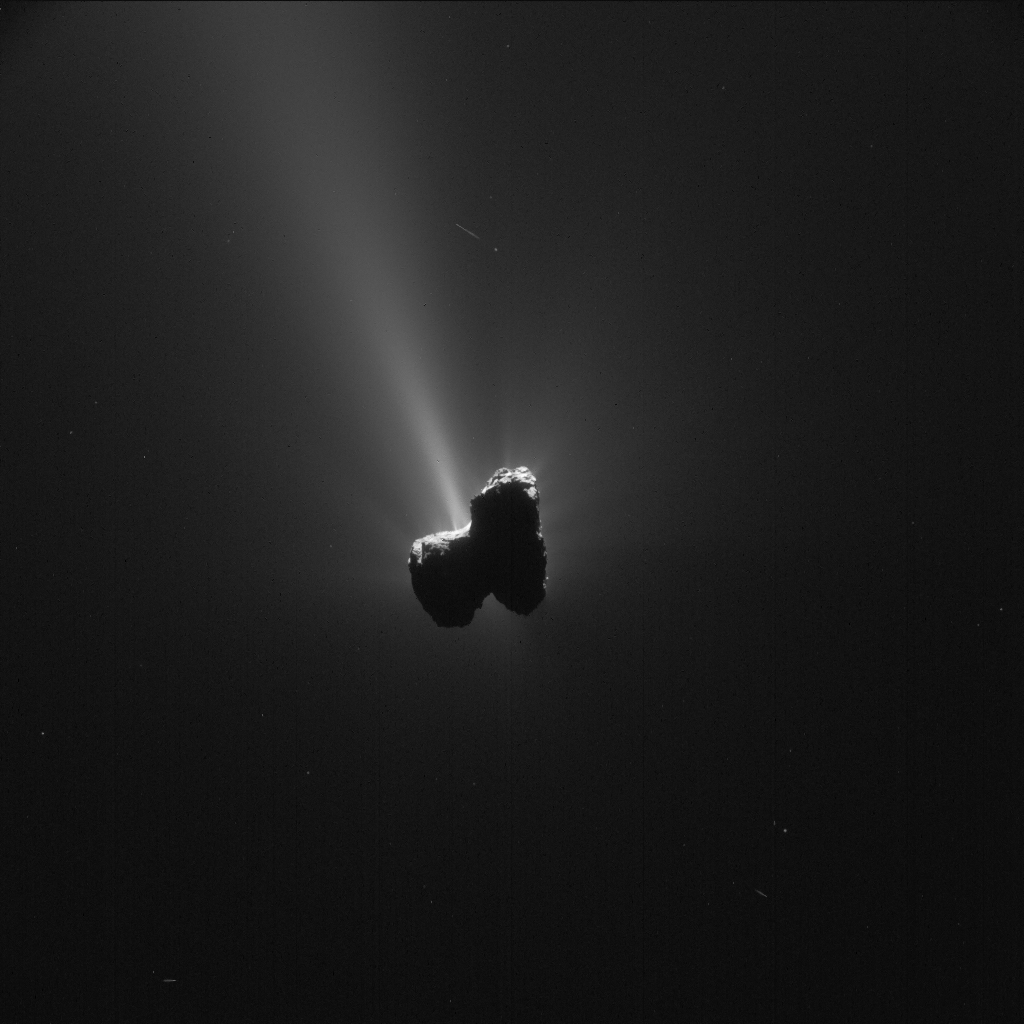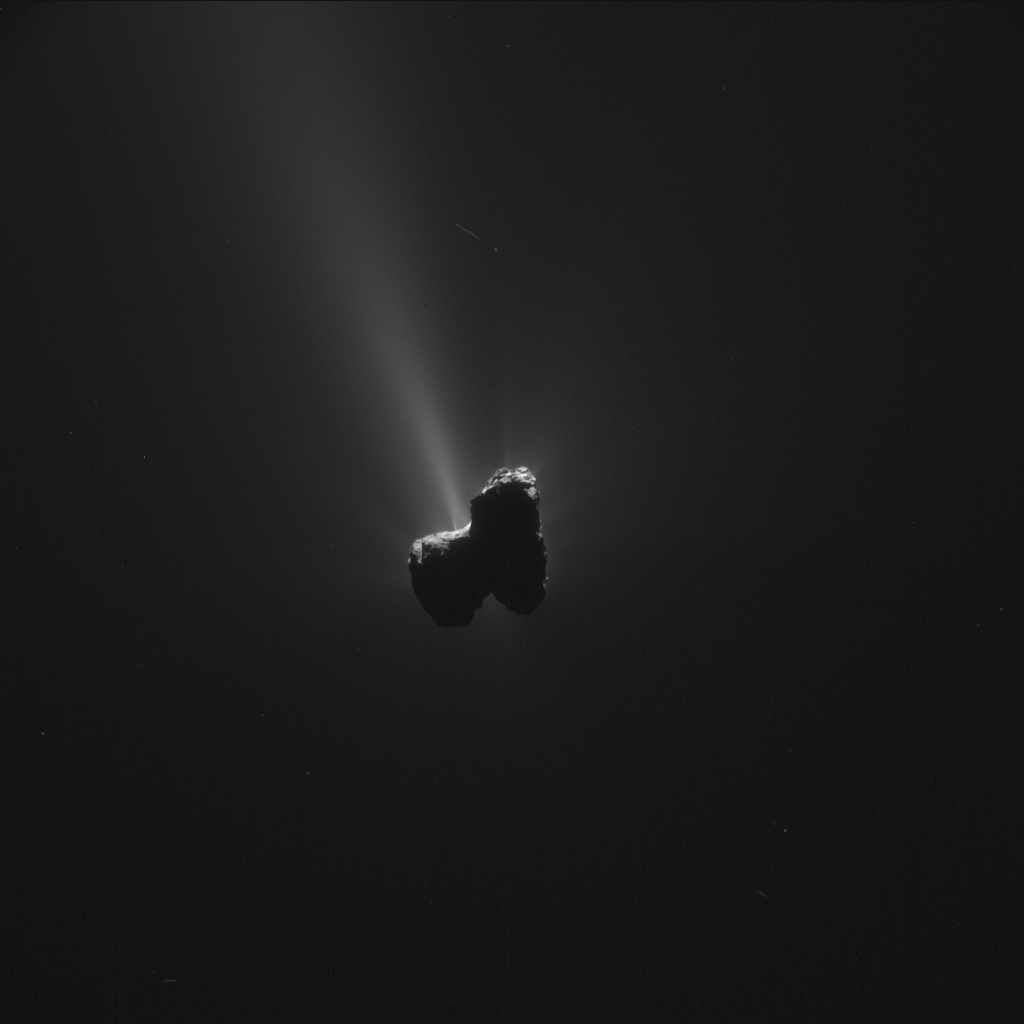Today’s CometWatch entry was taken by Rosetta’s NAVCAM on 11 September 2015, about 319 km from the nucleus of Comet 67P/Churyumov-Gerasimenko.

Single frame NAVCAM image of Comet 67P/C-G taken on 11 September 2015, 319 km from the nucleus. Credits: ESA/Rosetta/NAVCAM – CC BY-SA IGO 3.0
The scale is 27.2 m/pixel and the image measures 27.9 km across. The contrast was increased to reveal the comet’s activity.
In this orientation, the small comet lobe is on the left and the large lobe on the right. Rosetta was flying on the night side of the comet at the time, so most of the nucleus appears dark and stands out beautifully against the diffuse background glow of activity.
Parts of the Anubis and Atum regions are visible on the upper edge of the large lobe in this view, while Seth and Ash (below) are mostly cast in shadow. Anuket can be seen on the comet’s neck, leading to a small patch of Serqet that is visible on the top left edge of the small lobe; below these two regions, Hapi (on the neck) and Ma’at (on the small lobe) are also cast in shadow.
The original 1024 x 1024 image of today’s CometWatch is provided below:










Discussion: 5 comments
Thanks for this beautiful picture.
You write : « Rosetta was flying on the night side of the comet at the time », therefore the sun is right behind the comet, hidden by it, correct ?
Hi Xavier,
Thanks for your message! The Sun is not quite “right behind” the comet, as we can see from the few illuminated patches of the nucleus. In fact, in this configuration, the phase angle between Rosetta, the comet and the Sun was 120 degrees (so the Sun would be 60 degrees higher with respect to being “right behind” the comet).
Best wishes
The real wizardry is occurring at this side 🙂
Hi, I may have missed this but I haven’t seen any comment on the likely appearance of P-67’s”tail” as might be seen from say, a distance of a few million km, relative to those of more commonly-observed comets as seen from Earth. The photo here together with many published earlier suggests the emissions from P67’s surface are too low to enable a more spectacular tail. Any comments? Thanks.
Hi EDDIE: Kind of a ‘temperate’ comet 67P is. This is good for near science. Actual distance to Sun is around 1.3 times that of ours, but not this side.
ROSETTA will make a reality check stop at 500km in her actual comeback from 1500km exploration. Neither weak.
Appearance could be checked at:
https://blogs.esa.int/rosetta/2015/07/24/chasing-a-comet-from-earth-update-on-the-professional-observing-campaign/
and:
https://blogs.esa.int/rosetta/2015/08/07/amateur-astronomers-keeping-an-eye-on-the-comet/